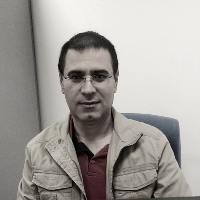Prediction of Physical Health (the Risk of Developing Diabetes) based on Social, Cultural, and Economic Capitals in Tabriz
Health is not essentially a biological concept and instead, it includes the socio-psychological aspects. Moreover, health is not a personal theme and it is rooted in the structure of the society. There is valid evidence that social determinants of health have a great effect on physical health. Based on some estimation, almost half of people’s health is determined by the social factors like, poverty, literate, housing, occupation, and respecting the women rights, and the other half is due to the health system, genetic issues, and the environment. Diabetes as a metabolic disease that results from disorder in insulin leakage, insulin function, or both has been rapidly increasing during the past several decades and now, it is becoming a public health problem all over the world. The outbreak of diabetes was 285 million in 2010, this rate reached 371 million in 2012, and it is predicted that it will reach 552 million by 2030. Based on the evidence, the epidemic of diabetes in Iran is high and around 7 million people are infected to diabetes in this country. The rapid increase of diabetes has a close relation with social factors. In this regard, it could have a close connection with the social capitals. It is assumed that social spaces including participation and trust through social support, awareness and sensitivity, facilitate the health or create it as well. In fact, social capital can raise health through providing social support, self-esteem, and mutual respect. On the other hand, it is believed that people who have cultural capital are equipped with a set of knowledge and cognitive skills, which prevent them committing high risk behaviors. Finally, economic capital gives people the possibility to provide their basic needs like food and house, cope with the problems that bring about less stress, and have more access to health and therapy. As a whole, it seems that social, cultural and economic capitals are able to influence diabetes. Given that, this relationship has been rarely studied, the main purpose of this research is to investigate whether the social, cultural, and economic capitals affect physical health (diabetes).
This cross-sectional survey has been carried out on the people aged 40 to 60 in Tabriz. Thus, 385 people were selected by means of random multi-sage sampling method. In a one-month phase, the respondents were invited to a special laboratory in Tabriz for doing a blood test free of charge. After referring to the laboratory and doing the test, they were given the research questionnaires to respond. For assessing social capital variable, the social capital questionnaire developed by Onyx and Bullen (2000), was employed. This instrument had been used before in Iran and of course its psychometric properties had been confirmed. Cronbach's alpha coefficient of internal consistency was used to determine the reliability of the questionnaire, which was 0.875. A researcher-made questionnaire was used to measure cultural capital consisting of three dimensions: institutional, visual and objective. This questionnaire has 15 items, which is measured at two-level nominal rating scale (yes = 1 and no = 0) and scores range from 0 to 15. According to the items of this questionnaire, which were mainly based on objective reality assessment, the content validity and opinions of the reviewers were used to determine its validity. Internal consistency was used to determine its reliability by Kuder-Richardson method which was 0.766. For measuring economic capital operationally, researcher-made questionnaire consisted of 10 items was used to measure the operational capital of the economy, consisting of 2 items (yes = 1 and no = 0) at nominal level, with scores ranging from 0 to 10. Considering that the items of this questionnaire are also based on objective reality assessment, content validity was used to assess validity and Kuder-Richardson coefficient was used to determine its reliability, which was 0.780. Finally, for measuring physical health, the result of blood sugar extracted by the blood test was made use of. The Logistic Regression Analysis lastly was used for the calculation of the relationships between the variables.
Based on the descriptive research findings, the rate of infection to abnormal diabetes among the respondents was 15.1% which is approximately compatible with the formal statistics in Iran which is 12% of the population over 18 years of age. According to the research findings, social capital has a significant impact on physical health, and with increasing social capital, the proportion of the chance to join the normal blood sugar group increases. This research finding in accordance with the theoretical bases of the study which show that social networks with decreasing anxiety, enforcing health, requesting more suitable health service, and activating the defensive body system, can improve the health. The research findings also indicate that, cultural capital has a significant effect on physical health (diabetes) so that, with increasing the cultural capital the probability of being a member of the normal group (non-diabetes), increases. This research finding in agreement with the theoretical framework of the study and displays that the respondents who have a higher level of information and cognitive abilities, are more sensitive toward their health and as a result, they avoid doing behaviors which can increase the risk of being infected with the diabetes like over consuming sweets, sugar substances, soda or tolerating the severe hunger that are able to create disorder in exudation insulin. Finally, the research findings demonstrate that, economic capital has a significant effect on physical health (diabetes) so that, the higher economic capital people have, the higher chance they have to be the member of the normal group (non-diabetes). It should be pointed out that, this research finding in harmony with the theoretical bases which show that increased economic capital will provide greater access to health services as well as exercise and more opportunities for physical health.
- حق عضویت دریافتی صرف حمایت از نشریات عضو و نگهداری، تکمیل و توسعه مگیران میشود.
- پرداخت حق اشتراک و دانلود مقالات اجازه بازنشر آن در سایر رسانههای چاپی و دیجیتال را به کاربر نمیدهد.




